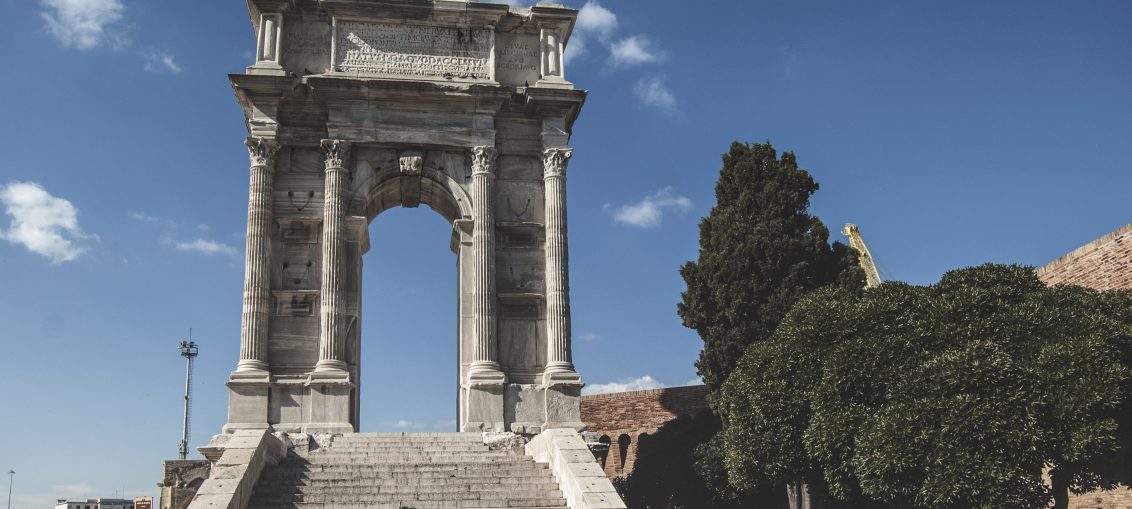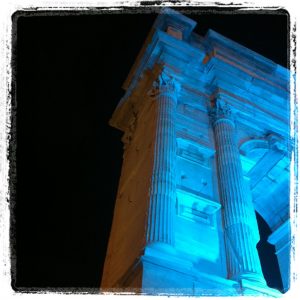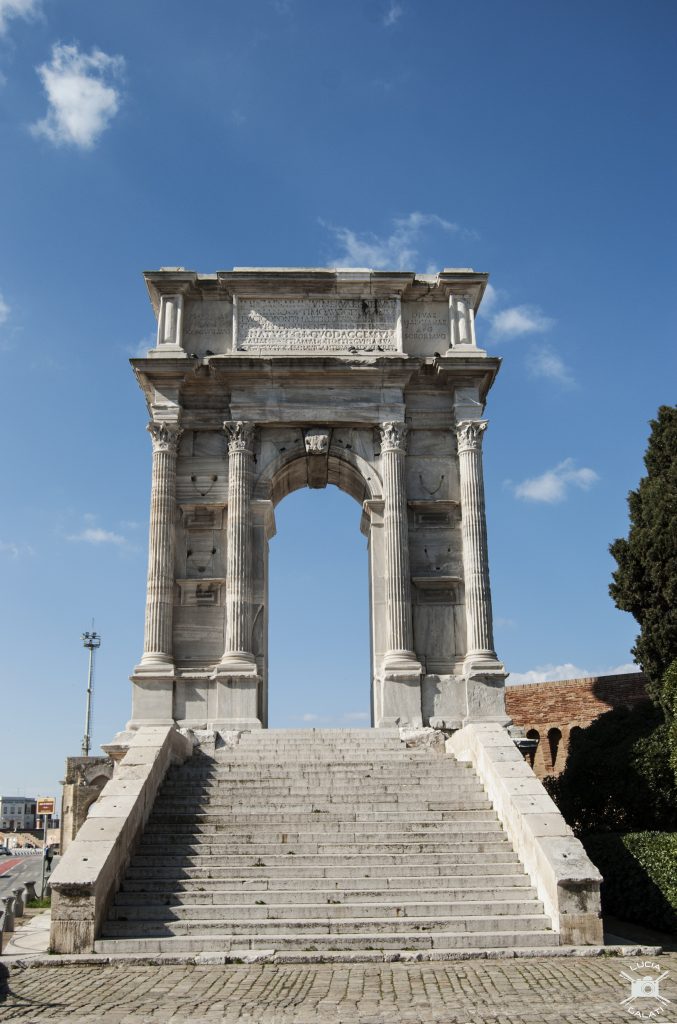
L’ Arco di Traiano rappresenta, unitamente all’Anfiteatro Romano, una delle testimonianze monumentali di epoca romana più importante della città.

Venne eretto nel 100-116 d.C. dal Senato e dal popolo romano in onore dell’Imperatore Traiano , che a proprie spese aveva fatto ampliare il porto cittadino e da qui partì per la vittoriosa guerra contro i Daci.
Attribuito ad Apollodoro di Damasco, architetto siriano di fiducia dell’impero, l’arco è alto 14 metri e costruito completamente in marmo turco. Si eleva su un alto podio; due robusti piloni incorniciano il fornice centrale e sono ornati su entrambe le facciate da due coppie di colonne scanalate con capitelli corinzi.
Sull’architrave si innalza l’attico con l’iscrizione dedicatoria del Senato e del popolo romano in onore dell’imperatore, della moglie Plotina e della sorella Maraciana e sulla sommità dell’attico si stagliavano le loro statue, come si rileva dai cavi ancora esistenti. Le iscrizioni che ancora si leggono, i fregi e le statue erano in bronzo e se ne impadronirono i Saraceni nel 848.

Ach of Trajan
The Arch of Trajan is, together with the Roman amphitheater, one of the most important monuments from Roman times in the city. It was built in 100-116 AD By the Senate and people of Rome in honour of that Emperor after he expanded the port of the city out of his own pocket.It was from here that Trajan departed for the ultimately successful war against the Dacians. Attributed to Apollodorus of Damascus, the trusted Syrian architect of the empire, the arch is 14 meters tall and made entirely of Turkish marble. It stands on a high podium; two sturdy pillars frame the central archway and are adorned on both sides by two pairs of fluted columns with Corinthian capitals.
The attic above the lintel shows a dedicatory inscription of the senate and roman people in honour of the emperor and his wife Plotina. Their bronze statues used to be on the attic: this is proved by the cables, inscription and frieze still in place. They were stolen by the Saracen pirates in 848.
Trajansbogen
Der Trajansbogen, zusammen mit dem Amphitheater, eines der bedeutsamsten römischen Denkmäler der Stadt. Es wurde 100 – 116 n.Chr gebaut vom römischen Senat und vom Volk um den Kaiser Trajan zu ehren , der auf eigene Kosten den Hafen erweitern lies und von hieraus reiste er siegreich in den Krieg gegen die Daker. Zurückzuführen auf Apollodor von Damaskus, vertrauter sirianischer Architekt des Reiches, der Bogen ist 14 Meter hoch gebaut und vollständig aus türkischem Marmor. Es erhebt sich auf einem hohen Sockel, mit zwei kräftigen Säulen die auf beiden Fassaden mit kannelierten und korinthischen Kapitellen verziert sind, diese umrahmen den zentralen Torbogen.
Auf den Balken hebt sich die Plattform der Attika ab mit eingravierter Widmung vom Senat und römischen Volk in Ehren des Kaisers und seiner Frau Plotina, auf den Gifpel ders Attika hebten sich ihre Statuen ab, wie man von den bestehenden Seilen entnehmen kann. Die Inschrift die heute noch lesbar ist, die Friesen (ein lineares, meist waagerechtes Stilelement) waren aus Bronze. Von dieser ergriffen die Sarazenen Besitz im Jahr 848.
